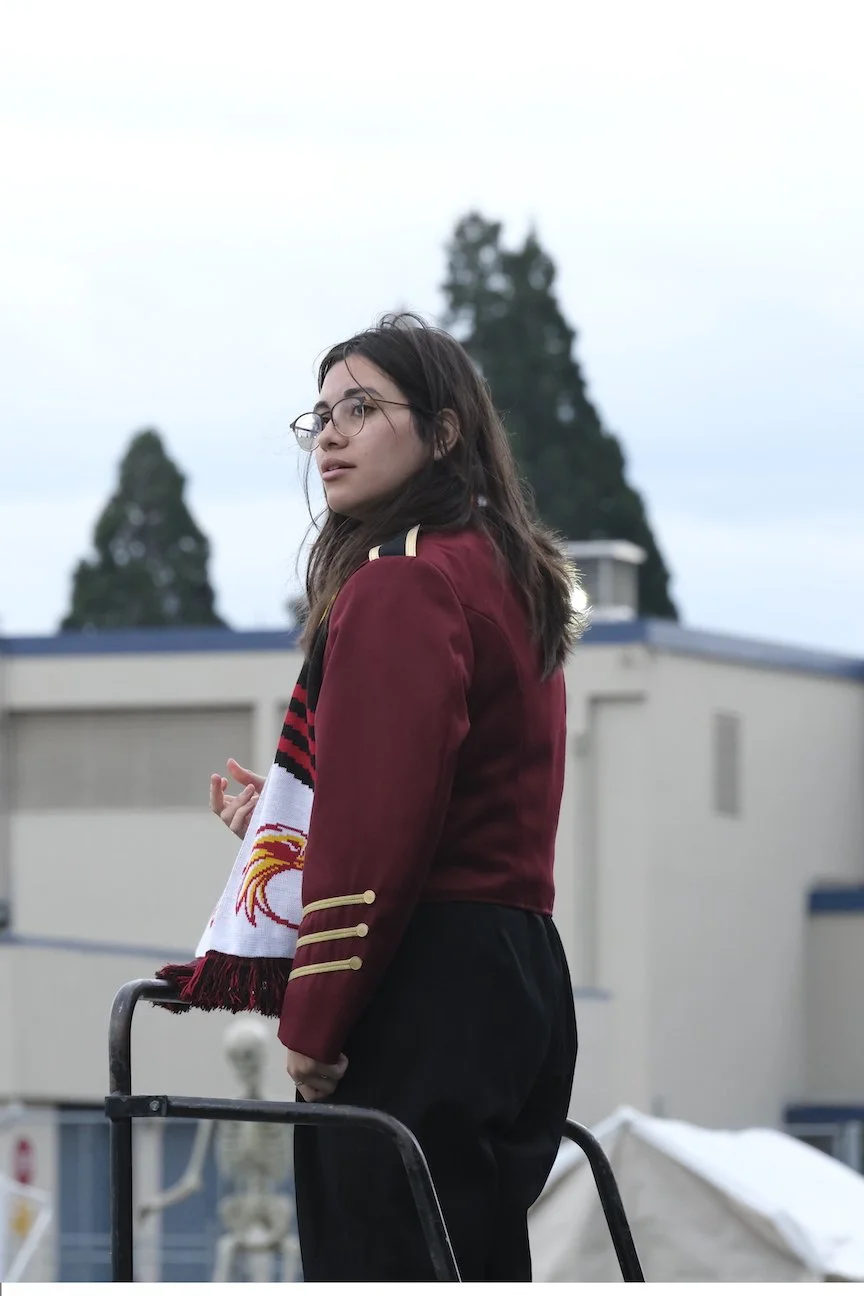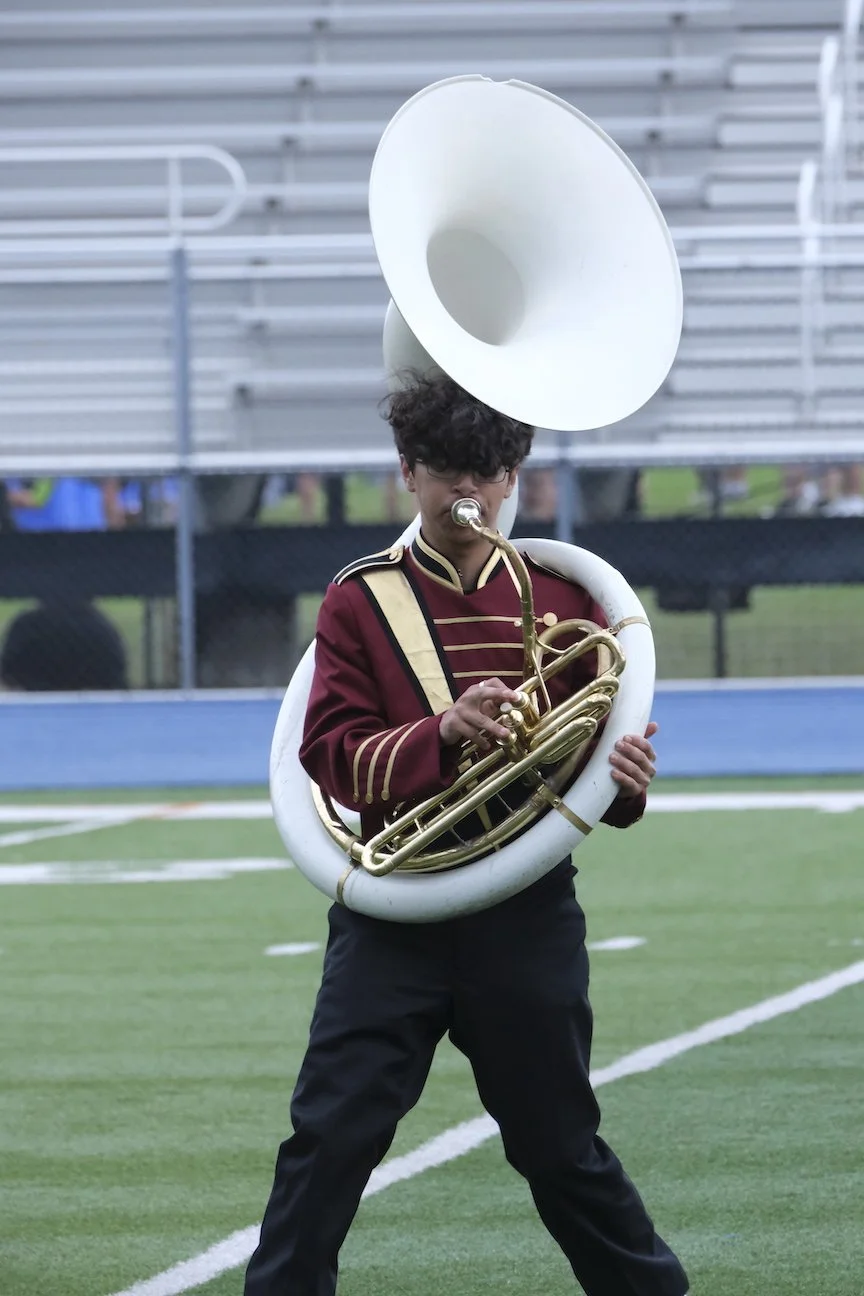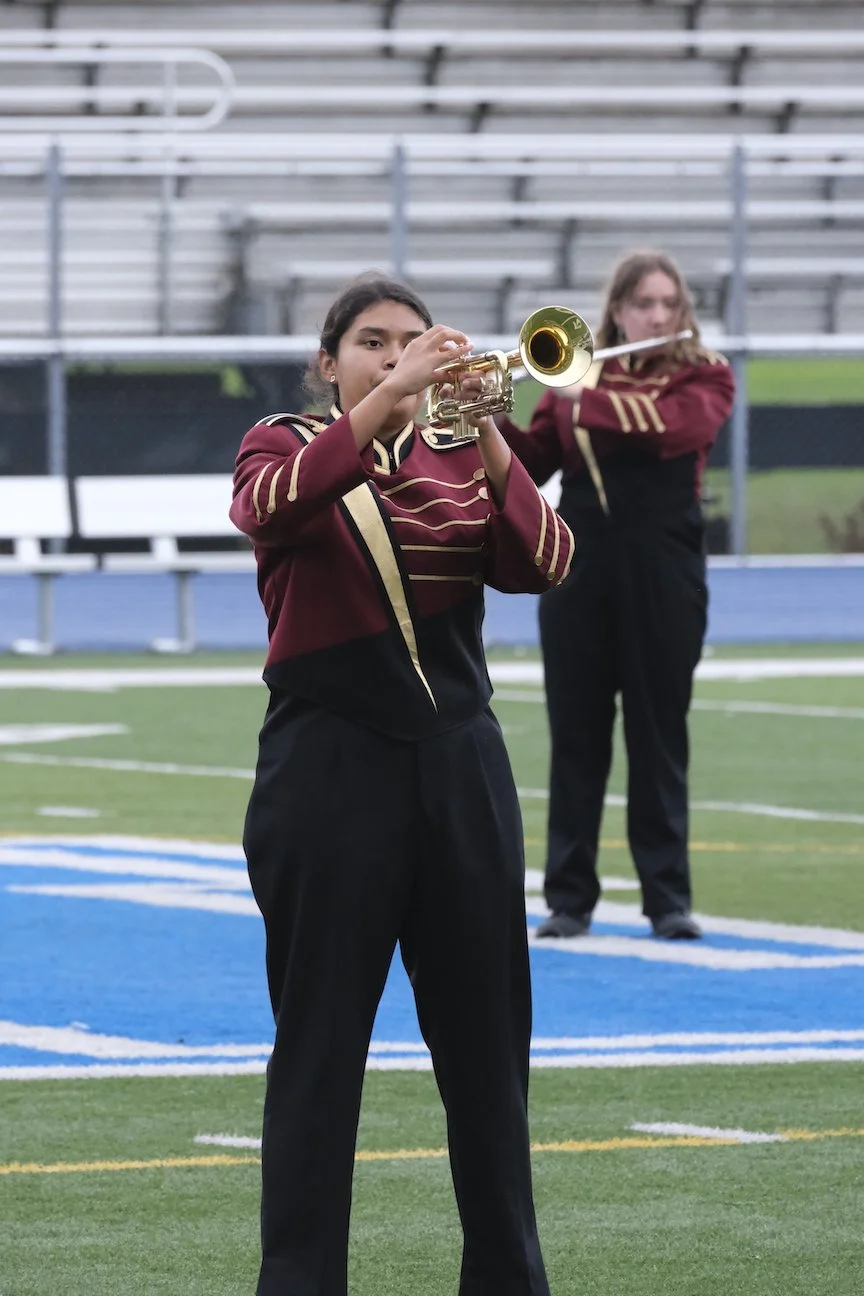TDHS Marching Ensemble raises baton, tests their brass at Northwest Competition
Gloria Moreno-Lopez, Valeria Villa Navarro, Dylan Hoag, and Kaleb Blaylock work through the opening dance feature.
Photos and Story by Mic Kelley
The Dalles, Ore., Nov. 15, 2023 - 6 p.m. comes and goes.
The main and practice fields at Wahtonka High School clear out, save for a few dedicated students. The field lights remain on. The temperatures drop as the sun sets, reflecting off 25 brass instruments working diligently into the evening.
Sticks click. Music plays, and students count, as shapes on the field begin to form.
Starting in mid-August, these kids devote hundreds of hours throughout the season to perfect 5 minutes on the field.
And it paid off.
This year, The Dalles High School Marching Ensemble took this practice to the next level for the first time in the school’s history.
On October 14th, The Dalles High School Marching Ensemble took their show “Into The Cosmos” to the NWAPA (Northwest Association for Performing Arts) circuit competing against 12 other schools at the event, and 38 schools total across both Oregon and Southern Washington the same day for the first time in the program’s history.
“Every year we do a custom-designed show for our students here in TD,” explains Mic Kelly, TDHS Music Director. “The program has been steadily growing over the years, with shows getting more and more complicated and students performing to a higher and higher standard. Our show ‘Into the Cosmos’ pulls music from Interstellar, Star Trek, Holst’s Suite of the Planets, and Star Wars; with our drill (field shapes) created to mimic various aspects of the songs, movies, or to position the students on the field to create impact points.”
Drum Major Yamari Santillan-Guzman about to start the show.
Abd “This year, we had enough students and a strong enough group that we wanted to take our show to the next level,” Kelley said.
NWAPA holds multiple marching arts competitions throughout the year, with the fall season running mid-August to the end of October/beginning of November. Bands perform their timed show to a panel of 8 judges, all focusing on various elements.
“The scoring system is weird to breakdown numbers-wise,” Kelly said. “But basically, the judges look at how the group performs the music and marches, how each individual performs and marches, the overall effect and impact of the show, the impact and clarity of the colorguard, and the impact and clarity of the percussion/drumline separate from the wind players.”
These scores are then totaled up and weighted to give a total out of 100 points. The preliminary round of competition gives your group a score against other groups in your division, which are created based on band size rather than school enrollment numbers. After the preliminary round of competition, you are given adjudicator feedback and a brief period of rehearsal time to implement any changes before your finals run.
The Dalles marching band received a final score of 62.55/100 for their performance, with their colorguard earning 3rd place in their division, and drumline taking 2nd place in their division. This put the ensemble at 28th place out of 38 groups that day.
“It was a great spot for our group to be. We spend roughly $1000 on show design, props, and materials for the competition,” Kelly said. “Whereas, many other schools spend $50,000 - $150,000 on their performance. Not only that, we only have one full-time staff member and two part-time volunteers working on the show whereas almost every other school has 8-25 staff members teaching the groups and designing their shows. The fact that we were competitive AND that we scored so well speaks volumes to the hard work these kids have put into this production.”
Along with various performance opportunities, marching band offers musical and critical thinking skills throughout the rehearsals and shows. Imagine standing at the opposite end of a football field from a friend, while someone in the middle gives you a cue to clap at the same time. Now multiply that by 25, 50, 200, to happen all at the same time across the field.
“Not only are we building a community among our students with very high expectations,” Kelly said. “But we also offer so many growth, design, and leadership opportunities for these students.” The band is led and conducted by student appointed “Drum Majors”. These students help facilitate rehearsals, communicate rehearsal goals and schedules with their peers, and, when it’s performance time, they run the show.
Ignacio Vega Vega defining what it means to have a confident first step.
“It’s great to see the work these kids put in. I’d say about 75% of the kids are doing marching band AND another club, sport, or activity…I’ve got robotics, soccer players, drama students, volleyball, football, cross country…pretty much every fall activity is present among these students. It makes our rehearsals run later than everyone else, but I’d rather have a late night to allow student participation than try and force a student to choose,” Kelly said.
The fall marching season has since ended, but the students are eagerly looking forward to next year. Show design and student leadership decisions start happening as early as April, with most of the decisions coming from the students. You can catch the marching band next year performing for our home football games, along with a community performance towards the end of October as the season closes out.
Valeria Villa Navarro plays the iconic Star Trek solo.
Support Local News
Available to everyone. Funded by readers.





